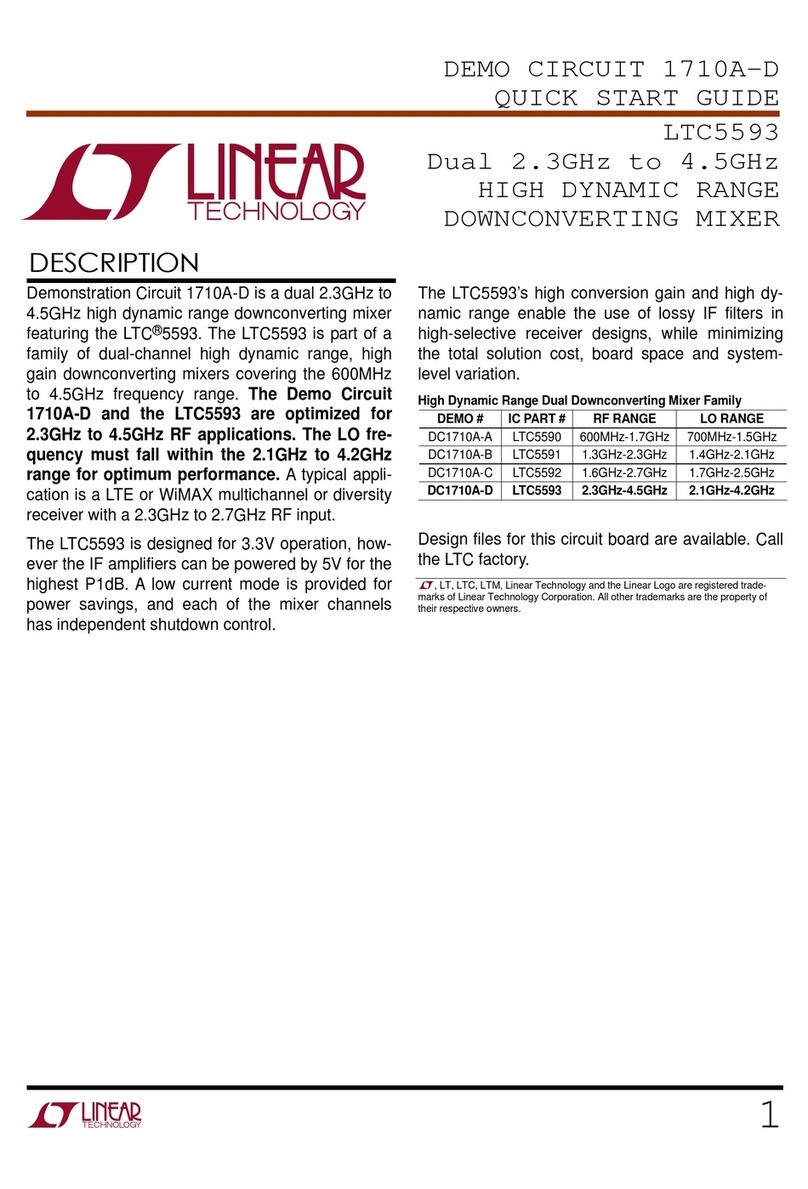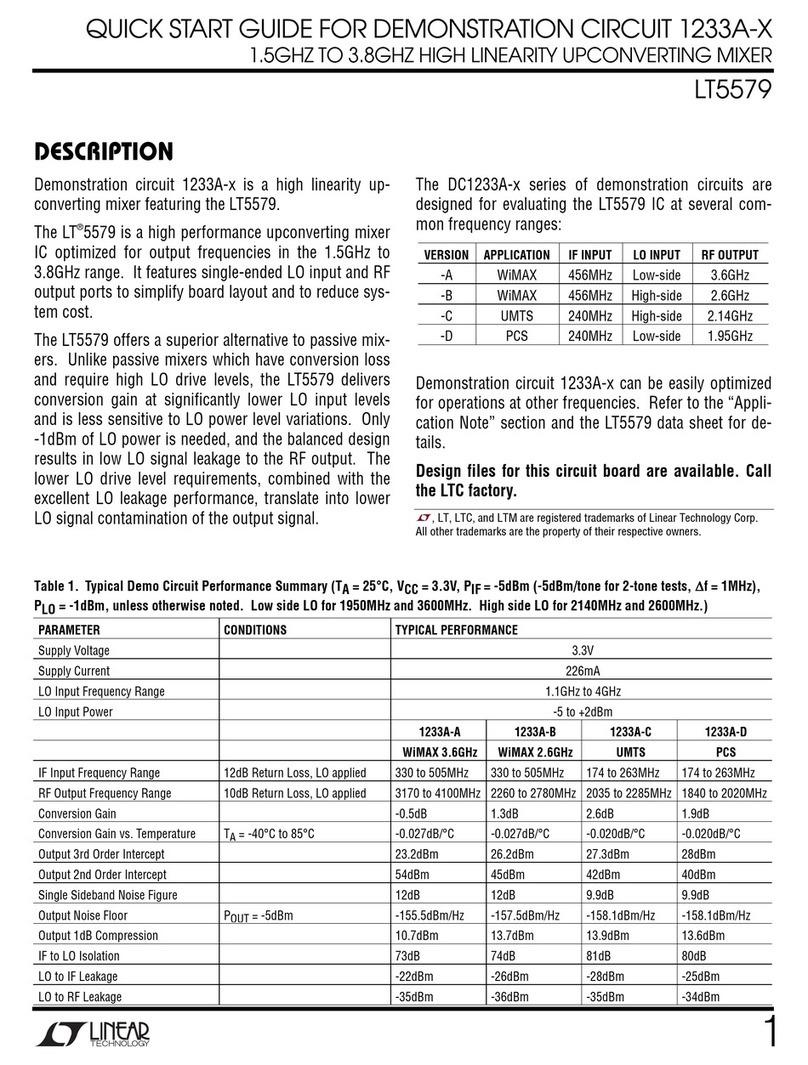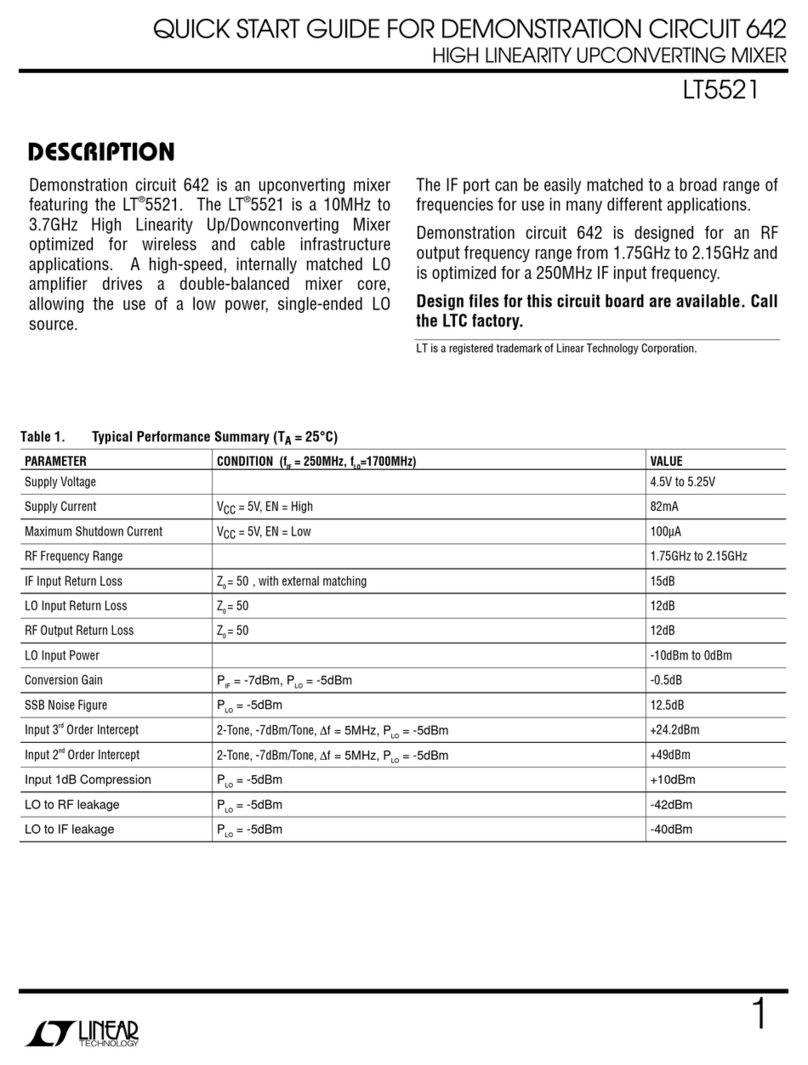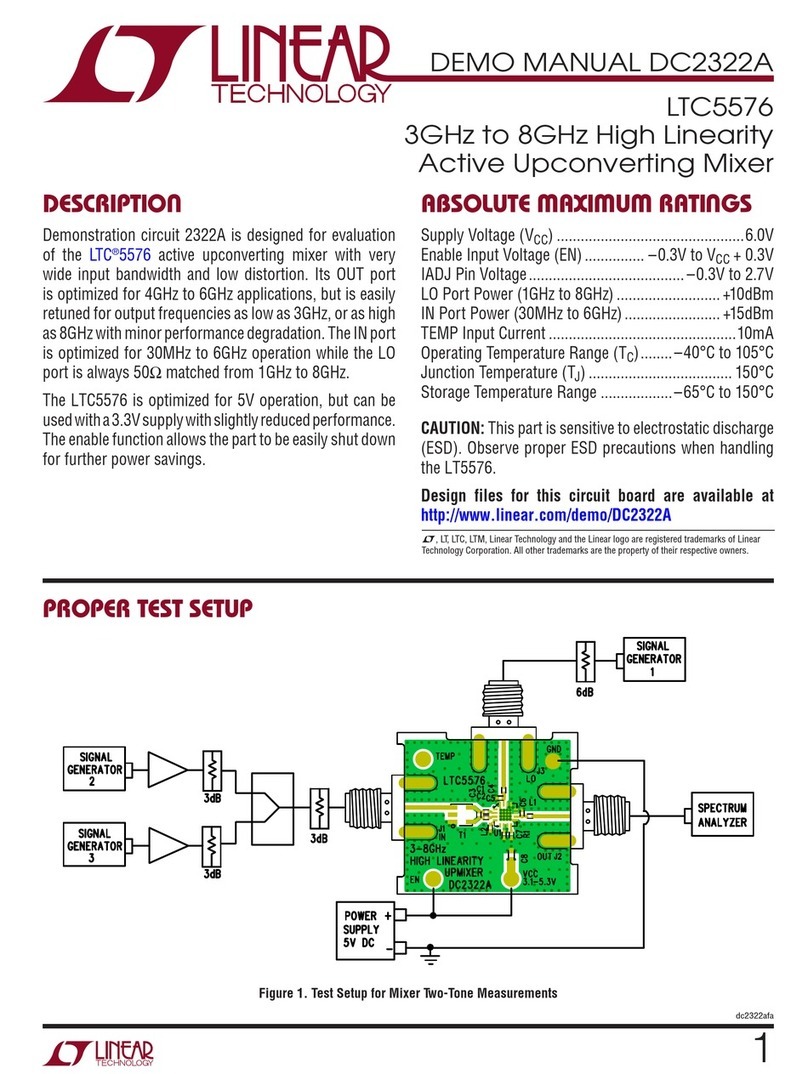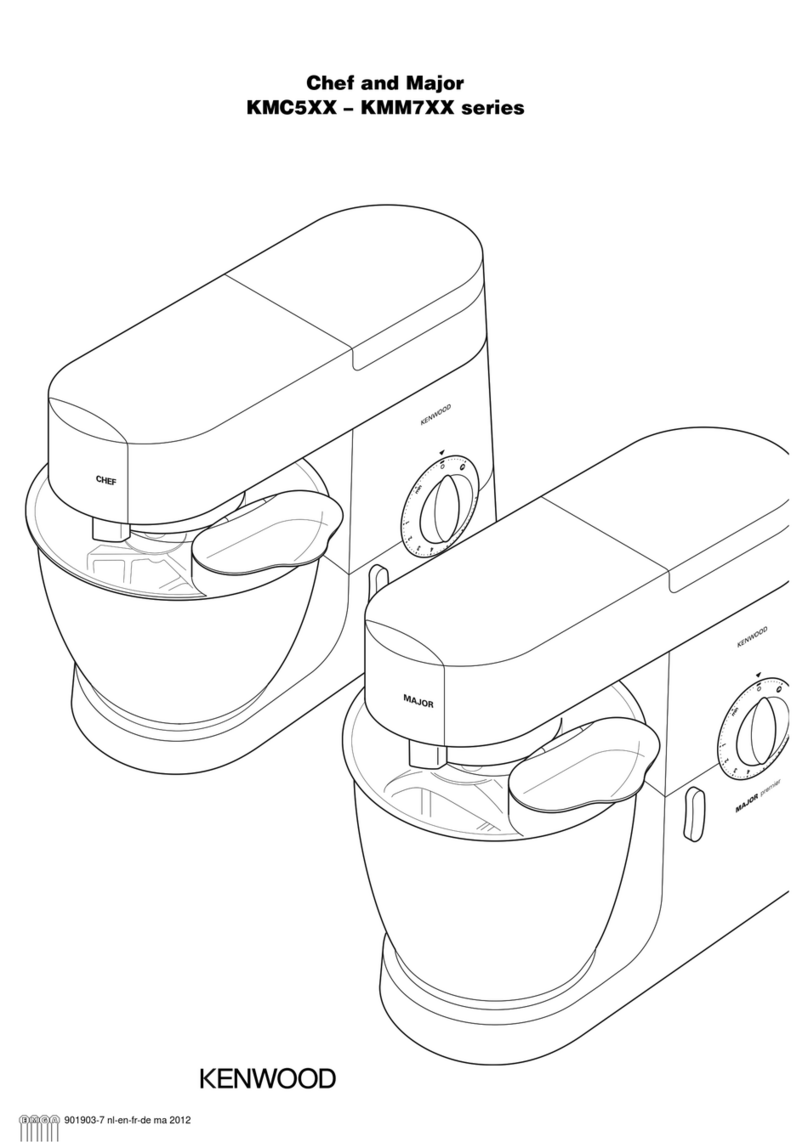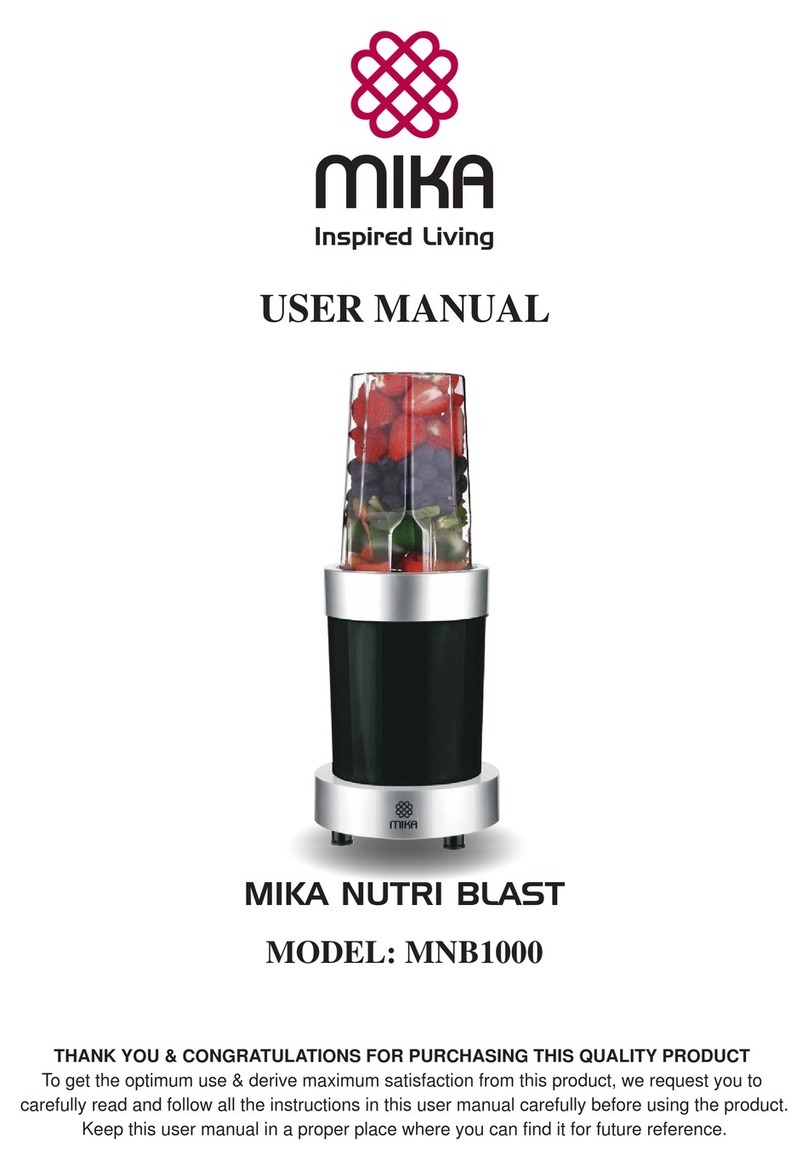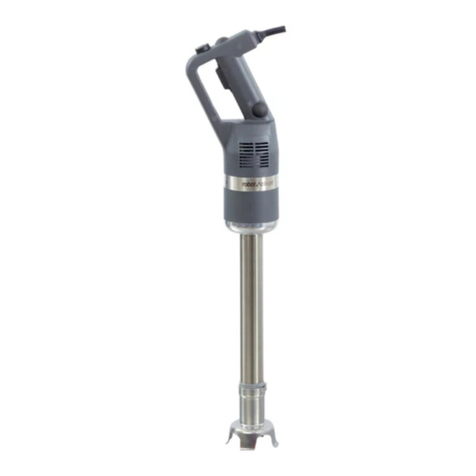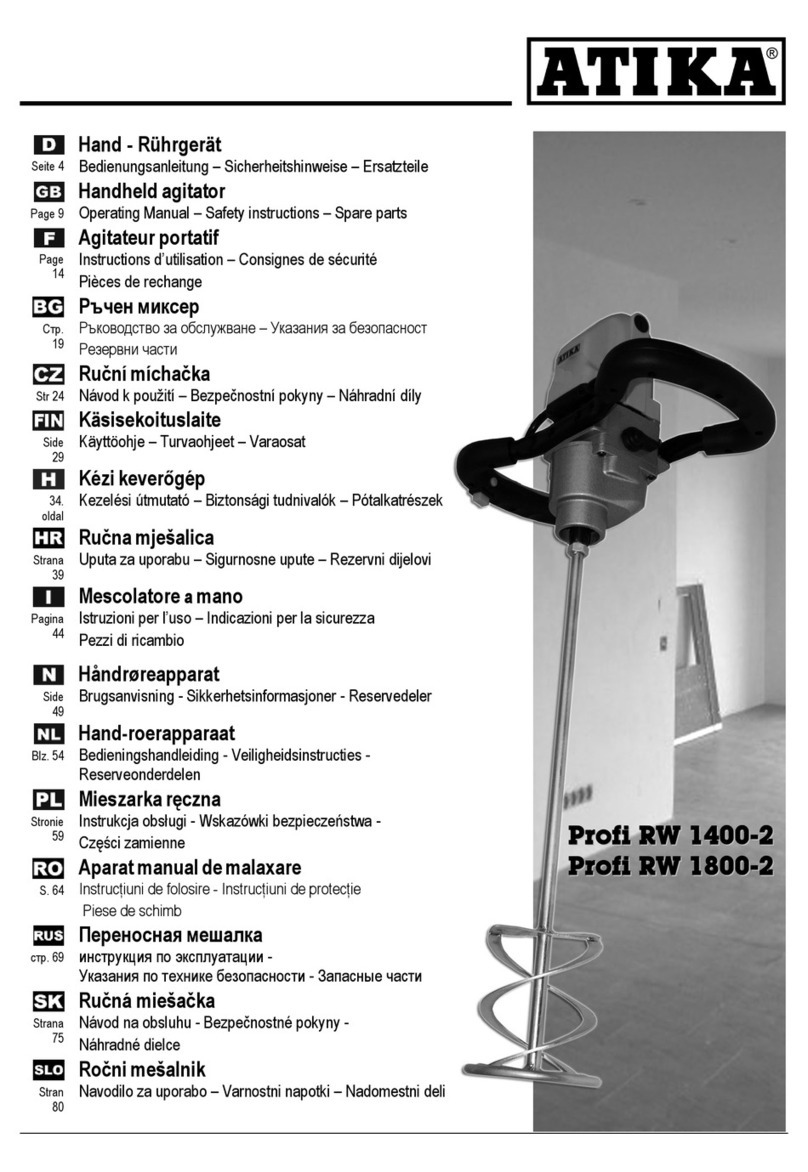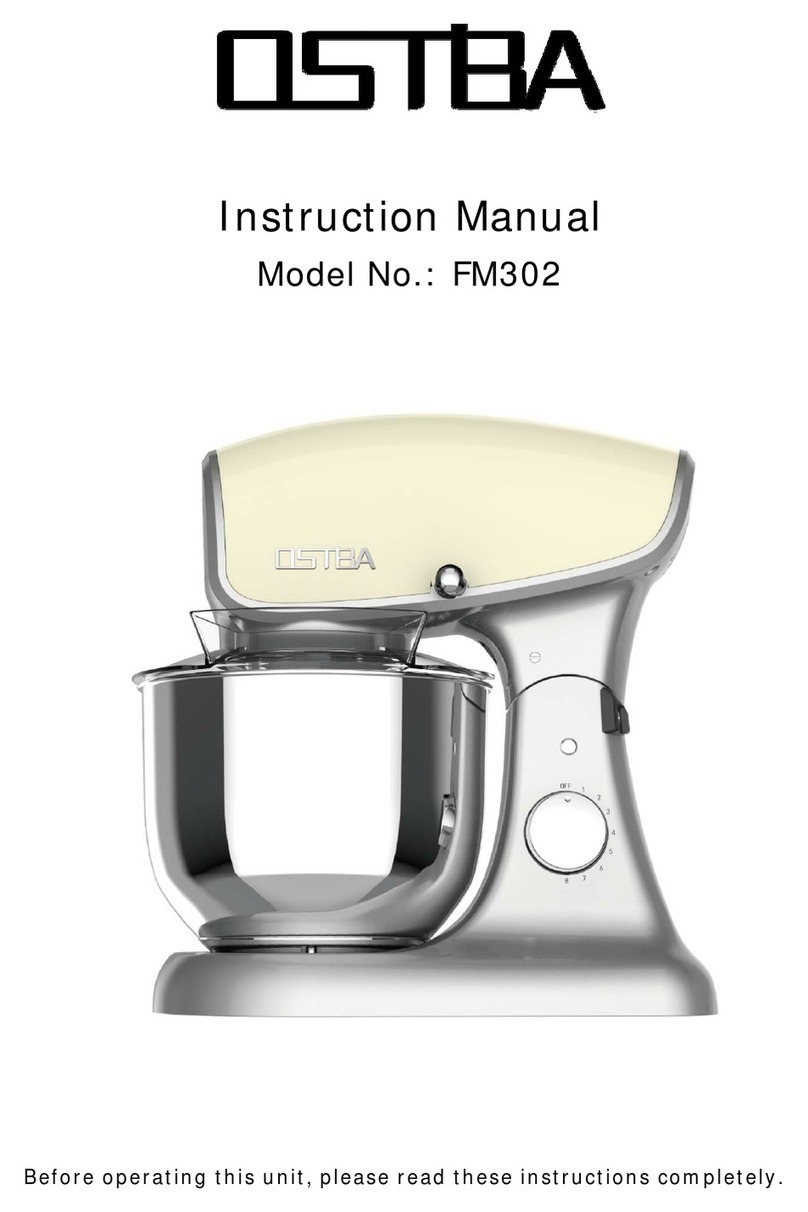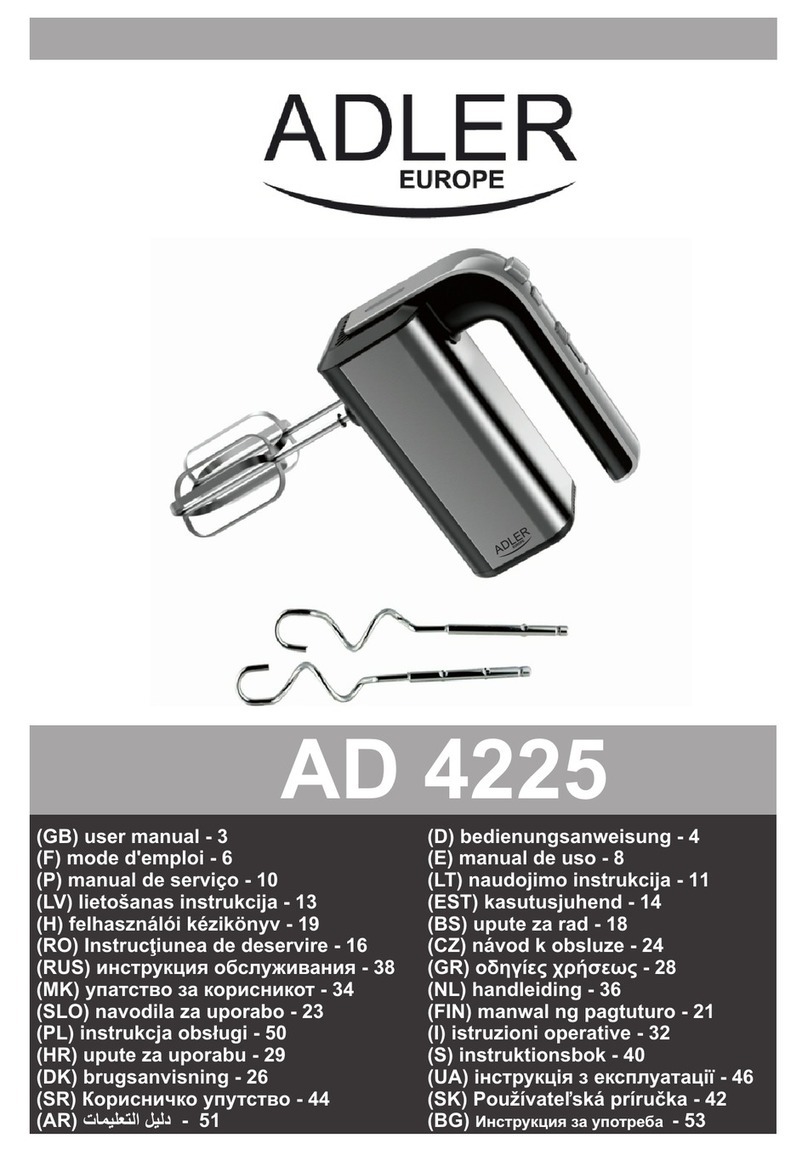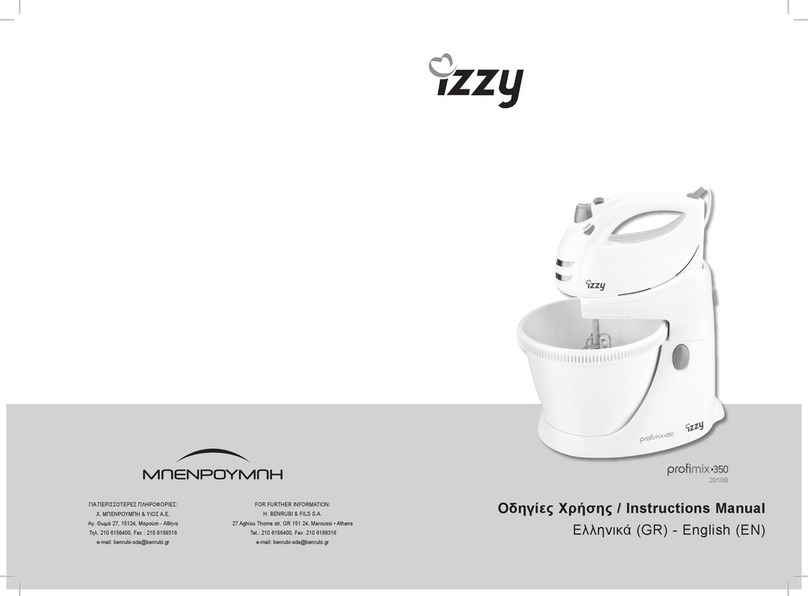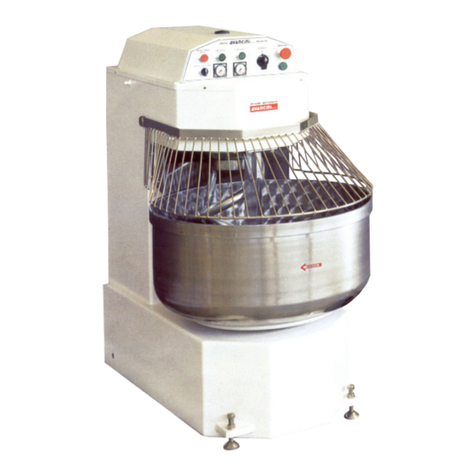Linear Technology LTC5551 User manual

1
dc2035af
DEMO MANUAL DC2035A
DESCRIPTION
LTC5551
300MHz to 3.5GHz Ultra-High Dynamic
Range Downconverting Mixer
Demonstration circuit 2035A features LT C
®
5551, which
is a 300MHz to 3.5GHz ultra high dynamic range down
converting mixer. Demo circuit 2035A is optimized for RF
input frequency range 1.1GHz to 2.7GHz. IF output port
is optimized for frequency range 116MHz to 250MHz. RF
input can be matched with few external component for a
wide range of frequencies. IF output port can be matched
externally up to 500MHz. A typical application with low
side LO injection provides the best performance for RF
input frequency range 1.1GHz to 2.7GHz.
L, LT, LTC, LTM, Linear Technology and the Linear logo are registered trademarks of Linear
Technology Corporation. All other trademarks are the property of their respective owners.
PERFORMANCE SUMMARY
LTC5551 is optimized for 3.3V operation. A low power
mode is available and is activated by pulling the ISEL pin
high.Thisreducesthepowerconsumptionby1/3,however
reduces the IIP3 to approximately 29dBm.
Design files for this circuit board are available at
http://www.linear.com/demo/DC2035A
Specifications are at VCC = 3.3V, EN = 3.3V, TC= 25°C, ISEL = LOW, PLO =
0dBm, PRF = 0dBm (∆f = 2MHz, 0dBm/tone for two-tone IIP3 tests), unless otherwise noted. Test circuit shown in Schematic Diagram.
PARAMETER CONDITION TYP UNITS
VCC Supply Voltage 2.5 to 3.6 V
VCC Supply Current EN = High, with LO Signal Applied
EN = High, ISIL = HIGH, with LO Signal Applied
204
142
mA
mA
Shutdown Current EN = Low <100 µA
EN Voltage Low, Chip Disabled
HIGH, Chip Enabled
<0.3
>1.2
V
V
EN Input Current VEN = 0V to 3.3V –30 to 100 µA
RF Input Frequency Range LO Signal Applied, with External Match 1.1 to 2.7 GHz
RF Input Return Loss LO Signal Applied >10 dB
IF Output Frequency Range LO Signal Applied, with External Match 116 to 250 MHz
IF Output Return Loss LO Signal Applied >10 dB
LO Frequency Range With External Match 1.0 to 3.5 GHz
LO Input Return Loss With External Match >10 dB
LO Input Power LO = 1000MHz to 3500MHz,with External LO Match –6 to 6 dBm
LO to RF leakage LO = 1000MHz to 3500MHz, with External LO Match ≤25 dBm
LO to IF leakage LO = 1000MHz to 3500MHz,with External LO Match ≤21 dBm
RF to LO Isolation RF = 1.1GHz to 2.7GHz, with External Match >55 dB
RF to IF Isolation RF = 1.1GHz to 2.7GHz, with External Match >23 dB
1.1GHz to 2.7GHz Downmixer Application: IF = 153MHz, ISEL = Low, Unless Otherwise Noted.
Power Conversion Gain RF = 1100MHz, Low Side LO
RF = 1500MHz, Low Side LO
RF = 1950MHz, Low Side LO
RF = 2700MHz, Low Side LO
2.5
2.5
2.4
1.7
dB
dB
dB
dB
Downloaded from Arrow.com.

2
dc2035af
DEMO MANUAL DC2035A
Absolute Maximum Ratings
Note: Stresses beyond absolute maximum ratings may
cause permanent damage to the device. Exposure to any
absolute maximum rating conditions for extended periods
may affect the device reliability and lifetime.
Supply Voltage (VCC, IF+, IF–).....................................4V
Enable Input Voltage (EN)................–0.3V to VCC + 0.3V
Power Select Voltage (ISEL)............–0.3V to VCC + 0.3V
LO Input Power (0.2GHz to 3.5GHz)................... +10dBm
LO Input DC Voltage............................................... ±0.1V
RF Input Power (0.3GHz to 3.5GHz)...................+20dBm
RF Input DC Voltage............................................... ±0.1V
Temp Diode Continuous DC input Current..............10mA
Temp Diode Input Voltage ......................................... ±1V
IFBIAS Voltage .........................................................2.5V
Operating Temperature Range (TC)........ –40°C to 105°C
Supply Voltage Ramping
Fast ramping of the supply voltage can cause current
glitch in the internal ESD protection circuits. Depending
on supply leads inductance, this could result in a supply
voltagetransient that exceedsthemaximumrating. Asupply
voltage ramp time of greater than 1ms is recommended.
DETAILED DESCRIPTION
Supply leads used to power the demo board should be
as short as possible to minimize the lead inductance and
resistance. During power-up, connect the power leads
to the demo board before turning on the power supply.
Supply voltage should be ramped up slowly to 3.3V to
avoid any overshoot transients which may damage the IC.
Enable Feature
To enable the chip, EN voltage must be greater than 1.2V.
However, EN voltage must not exceed VCC by more than
0.3V to avoid permanent damage to the chip. When EN is
left floating, the voltage will be pulled low by the internal
pull-down resistor, and the chip will be disabled.
Low Power Mode
The LTC5551 can be set to low power mode using a digital
voltage applied to ISEL. This allows flexibility to choose a
reduced current of operation when lower RF performance
is acceptable. When ISEL is set to low (<0.3V), the mixer
operate at nominal DC current. When ISEL is set to high
(>1.2V), DC current consumption is reduced resulting in
lower RF performance. When ISEL is left floating, ISEL
is pulled down to low voltage by the internal pull down
resistor.
PERFORMANCE SUMMARY
Specifications are at VCC = 3.3V, EN = 3.3V, TC= 25°C, ISEL = LOW, PLO =
0dBm, PRF = 0dBm (∆f = 2MHz, 0dBm/tone for two-tone IIP3 tests), unless otherwise noted. Test circuit shown in Schematic Diagram.
PARAMETER CONDITION TYP UNITS
2-Tone 3rd Order Intercept RF = 1100MHz, Low Side LO
RF = 1500MHz, Low Side LO
RF = 1950MHz, Low Side LO
RF = 2700MHz, Low Side LO
36.0
36.0
35.5
38.1
dBm
dBm
dBm
dBm
2-Tone Input 2nd Order Intercept
(∆f = 154MHz = fIM2)
RF = 1950MHz (2027MHz/1873MHz), LO = 1797MHz 58.4 dBm
SSB Noise Figure RF = 1950MHz, Low Side LO 9.7 dB
Input 1dB Compression RF = 1950MHz, Low Side LO 18 dBm
Low Power Mode, IF = 153MHz, ISEL = High
Power Conversion Gain RF = 1950MHz, Low Side LO 2.4 dB
Input 3rd Order Intercept RF = 1950MHz, Low Side LO 29.3 dBm
SSB Noise Figure RF = 1950MHz, Low Side LO 8.3 dB
Input 1dB Compression RF = 1950MHz, Low Side LO 16.7 dBm
Downloaded from Arrow.com.Downloaded from Arrow.com.

3
dc2035af
DEMO MANUAL DC2035A
DETAILED DESCRIPTION
Temperature Diode
TheLTC5551provides anon-chipdiode connectedtoTEMP
on the demo board. TEMP is connected to the anode of
the internal ESD diode. The junction temperature can be
measured by injecting a 10µA current into TEMP pin. The
voltage vs temperature coefficient of the diode is about
–1.72mV/°C with 10µA current injected into the TEMP pin.
RF Input
The RF input of DC2035A is externally matched from
1100MHz to 2700MHz, with return loss greater than
10dB. However, the RF input match can be shifted down
to 300MHz, or up to 3500MHz by replacing the external
matching components, see Table 1. A series DC blocking
capacitor must be used if DC voltage is present at the RF
input to avoid damage to the internal input transformer.
LO Input
The LO input on DC2035A is externally matched from
1000MHz to 3500MHz with series 3.9pF capacitor. Match-
ing below 1000MHz can be accomplished by adding a
shunt component at C3, see Table 1. A series DC blocking
capacitor must be used to avoid damage to the integrated
transformer if DC voltage is present at the LO input.
Table 1. Matching Values at Other Frequencies (See Schematic Diagram)
APPLICATION RF MATCH LO MATCH IF TRANSFORMER
RF (MHz) LO X1 C1 X2 C2 C3 T1 VENDOR
300 to 650 HS 15nH 15pF 15pF 15pF 8.2pF TC4-1W-7ALN+ Mini-Circuit
500 to 1100 HS 13nH 6.8pF 4.7pF 8.2pF 2.2pF WBC4-6TLB Coilcraft
1100 to 2700 LS, HS 7.5nH 2.2pF – 3.9pF – TC4-1W-7ALN+ Mini-Circuit
2300 to 3500 LS, HS 1.2pF 22pF 2.2nH 3.9pF – TC4-1W-7ALN+ Mini-Circuit
RF Input Return Loss (with LO Signal Applied)
LO Input Return Loss
IF Output
IF output port can be matched for IF frequencies as low as
5MHz, and as high as 500MHz. Standard demo board is
matched for center frequency 153MHz. Other frequencies
can be matched by changing the values of L1, and L2. See
table below for inductor values for other IF frequencies.
RF FREQUENCY (GHz)
0
RETURN LOSS (dB)
0
5
15
10
20
30
25
35
40 123
dc2035a RF
4
LO FREQUENCY (GHz)
0
RETURN LOSS (dB)
0
5
15
10
20
25 1.5 2.5 3.5
dc2035a LO
4.01.00.5 2.0 3.0
Downloaded from Arrow.com.Downloaded from Arrow.com.Downloaded from Arrow.com.

4
dc2035af
DEMO MANUAL DC2035A
QUICK START PROCEDURE
Demonstration circuit 2035A is easy to set up to evalu-
ate the performance of the LTC5551. Refer to Figures 1
to 3 for proper equipment connections and follow the
procedures below:
Note: Care should be taken to never exceed absolute
maximum input ratings. Make all connections with RF
and DC power off.
Return Loss Measurements
1. Configure the network analyzer for return loss measure-
ment, set appropriate frequency range, and set the test
signal to 0dBm.
2. Calibrate the network analyzer.
3. Connect all test equipment as shown in Figure 1 with the
signal generator and the DC power supply turned off.
4. Ramp up VCC supply voltage to 3.3V, and verify that the
current consumption is approximately 204mA with LO
signal applied and ISEL set to Low. The correct supply
voltage should be confirmed, measured at the demo
board to account for the voltage drop across supply
leads.
5. Set the LO source to provide a 0dBm, CW signal to the
demo board LO input port at appropriate LO frequency.
6. With the LO signal applied, and the unused demo board
ports terminated in 50Ω, measure return losses of the
RF input and IF output ports.
7. Terminate the RF input and the IF output ports in 50Ω.
Measure return loss of the LO input port.
RF Performance Measurements
1. Connect all test equipment as shown in Figure 2 with the
signal generators and the DC power supply turned off.
2. Ramp up the VCC supply voltage to 3.3V, and verify
that the current consumption is approximately 204mA
with LO signal applied. The supply voltage should be
confirmed at the demo board VCC and GND terminals
to account for the voltage drop across wire leads.
3. Set the LO source signal generator to provide 0dBm,
CW signal to the demo board LO input port at the ap-
propriate LO frequency.
4. Set the RF sources, to provide the two tone inputs at
0dBm per tone, CW signal 2MHz apart to the demo
board RF input port at the appropriate RF frequency.
5. Measure the resulting IF output on the spectrum
analyzer:
DETAILED DESCRIPTION
IF Return Loss (with LO Signal Applied) Table 2. Inductor Matching Values vs IF Frequencies
L1,L2 vs IF Frequencies
IF (MHz) L1, L2 (nH) COMMENTS
120 820 Coilcfraft 0603 LS
153 470 Coilcfraft 0603 LS
240 180 Coilcfraft 0603 LS
305 120 Coilcfraft 0603 LS
380 56 Coilcfraft 0603 LS
456 33 Coilcfraft 0603 LS
IF FREQUENCY (MHz)
0
RETURN LOSS (dB)
0
2
4
8
6
10
12 300
dc2035a IF
500200100 400
Downloaded from Arrow.com.Downloaded from Arrow.com.Downloaded from Arrow.com.Downloaded from Arrow.com.

5
dc2035af
DEMO MANUAL DC2035A
a. Measure The wanted two-tone IF output signals are
located at:
Low Side LO:
fIF1 = fRF1 – fLO,
fIF2 = fRF2 – fLO
High Side LO:
fIF1 = fLO – fRF1,
fIF2 = fLO – fRF2
b.The3rdorderintermodulationproducts which are closest
to the wanted IF signals are used to calculate the input
3rd order intercept, where ∆IF = fIF2 – fIF1:
fIM3,1 = fIF1 – ∆IF
fIM3,2 = fIF2 + ∆IF
b. Calculate the input 3rd order intercept:
IIP3 = (∆IM3)/2 + PRF
Where ∆IM3 = PIF – PIM3
6. Turn off one of the RF signal generators, and measure
conversion gain, RF to IF isolation, LO to IF leakage,
and input 1dB compression point.
Noise Figure Measurements
1. Configure and calibrate the noise figure meter for mixer
measurements.
2. Connect all test equipment as shown in Figure 3 with
signal generator and DC power supply turned off.
3. Increase VCC supply voltage to 3.3V, and verify that the
current consumption is approximately 204mA with LO
signal applied. The supply voltage should be confirmed
at the demo board VCC and GND terminals to account
for voltage drop across supply leads.
4. Set LO source to provide a 0dBm, CW signal to the
demo board LO input port at appropriate LO frequency.
5. Measure the single-sideband noise figure.
QUICK START PROCEDURE
Figure 1. Proper Equipment Setup for Return Loss Measurements
Downloaded from Arrow.com.Downloaded from Arrow.com.Downloaded from Arrow.com.Downloaded from Arrow.com.Downloaded from Arrow.com.

6
dc2035af
DEMO MANUAL DC2035A
QUICK START PROCEDURE
Figure 2. Proper Equipment Setup for RF Performance Measurements
Figure 3. Equipment Setup for SSB Noise Figure Measurements
Downloaded from Arrow.com.Downloaded from Arrow.com.Downloaded from Arrow.com.Downloaded from Arrow.com.Downloaded from Arrow.com.Downloaded from Arrow.com.

7
dc2035af
DEMO MANUAL DC2035A
HARDWARE SETUP
LTC5551 is an ultrahigh dynamic range downconverting
mixer with very high input third order intercept point.
Accuracy of its performance measurement is highly de-
pendent on equipment setup and measurement technique.
The recommended setups are presents in the following
pages. The following precautions should be observed:
1. Use high performance signal generators with low har-
monic output and low phase noise, such as Rohde &
Schwarz SME06 or equivilent. Filter may be used at the
signal generators to suppress higher order harmonics.
For example, when measuring 2nd order product spurs.
2. A high quality RF power combiner that provide broad-
band 50Ω termination on all ports, and have excellent
port-to-port isolation must be used to get the best RF
performance, such as MCLI PS2-17.
3. High performance amplifiers with high IP3 is recom-
mended at the inputs to improve the isolation when
performing the two-tone measurements. High isolation
minimizes the modulation of the two sources, thus
improving the source IP3.
4. Use attenuator pads with good broadband VSWR on
the demonstration board’s input and output ports.
They provide the improved return loss that can re-
duce the interstage reflections which can degrade RF
performance.
5. Use a high dynamic range spectrum analyzer such as
FSEM 30 for linearity measurements.
6. Use narrow resolution bandwidth (RBW) and engage
video averaging on the spectrum analyzer to lower dis-
played average noise level (DANL) in order to improve
sensitivity and to increase dynamic range. However,
the trade off is increased sweep time.
7. Spectrum analyzer produces its own nonlinearity when
overdriven. Generally, 30dB of input attenuation is suf-
ficient for linearity measurements. Appropriate amount
of attenuation should be used so that the spectrum
analyzer nonlinearity does not degrade the device under
test (DUT) RF performance. However, using too much
input attenuation will result is higher noise level, and
decreased dynamic range.
8. Before starting any RF measurements, the input sig-
nal must be calibrated. The input signal IP3 must be
verified to be much better than the DUT so that the
measurement equipment does not degrade the overall
RF measurement result.
P1dB Compression Measurement
Figure 2 can be modified for the P1dB compression
measurement. Turn off one of the input signal generators,
sweep the input power so that LTC5551 conversion gain
is reduced by 1dB. The input power at which conversion
gain is reduced by 1dB is the Input referred 1dB compres-
sion point. However, signal generators and amplifiers at
the input also introduce additional compression into the
signal path. Therefore, the 6dB pad after the combiner
is removed for this test so that LTC5551’s compression
point is accurately measured.
Downloaded from Arrow.com.Downloaded from Arrow.com.Downloaded from Arrow.com.Downloaded from Arrow.com.Downloaded from Arrow.com.Downloaded from Arrow.com.Downloaded from Arrow.com.

10
dc2035af
DEMO MANUAL DC2035A
PARTS LIST
ITEM QTY REFERENCE PART DESCRIPTION MANUFACTURER/PART NUMBER
Required Circuit Components
1 1 C1 CAP., C0G, 2.2pF, ±0.1pF, 50V, 0402 AVX, 04025A2R2BAT2
2 1 C2 CAP., C0G, 3.9pF, ±0.1%, 50V, 0402 AVX, 04025A3R9BAT2A
3 0 X2, R3, C3 0402, OPT
4 2 C4, C6 CAP., 0.56µF, 10%, 10V, X5R, 0603 AVX, 0603ZD564KAT2A
5 2 C5, C7 CAP., 22pF, 50V, 5%, NPO, 50V, 0402 AVX, 04025A220JAT2A
6 2 C8, C9 CAP., X7R, 1000pF, 10%, 50V, 0402 AVX, 04025C102KAT2A
7 5 E1-E5 TURRET, PAD 0.061" MILL-MAX, 2308-2-00-80-00-00-07-0
8 1 J1-J3 CONN., SMA 50Ω EDGE-LAUNCH E. F. JOHNSON, 142-0701-851
9 2 L1, L2 IND., WIRE-WOUND, 470nH, 2%, 0603 COILCRAFT, 0603LS-471XGLB
10 1 X1 IND., WIRE-WOUND, 7.5nH, 0402 COILCRAFT, 0402hp-7N5XJL
11 2 R1, R2 RES., CHIP, 475Ω, 1%, 0402 VISHAY, CRCW0402475RFKED
12 1 T1 TRANSFORMER, SMT, RF WIDEBAND, 4:1 MINI-CIRCUITS, TC4-1W-7ALN+
13 1 U1 IC., LINEAR TECHNOLOGY, LTC5551IUF LINEAR TECH., LTC5551IUF
Downloaded from Arrow.com.Downloaded from Arrow.com.Downloaded from Arrow.com.Downloaded from Arrow.com.Downloaded from Arrow.com.Downloaded from Arrow.com.Downloaded from Arrow.com.Downloaded from Arrow.com.Downloaded from Arrow.com.Downloaded from Arrow.com.

11
dc2035af
DEMO MANUAL DC2035A
Information furnished by Linear Technology Corporation is believed to be accurate and reliable.
However, no responsibility is assumed for its use. Linear Technology Corporation makes no representa-
tion that the interconnection of its circuits as described herein will not infringe on existing patent rights.
SCHEMATIC DIAGRAM
5
5
4
4
3
3
2
2
1
1
D D
C C
B B
A A
1. ALL RESISTORS ARE IN OHMS, 0402
2. ALL CAPACITORS ARE IN MICROFARADS, 0402
NOTE: UNLESS OTHERWISE SPECIFIED
TECHNOLOGY
TECHNOLOGY
TECHNOLOGY
Downloaded from Arrow.com.Downloaded from Arrow.com.Downloaded from Arrow.com.Downloaded from Arrow.com.Downloaded from Arrow.com.Downloaded from Arrow.com.Downloaded from Arrow.com.Downloaded from Arrow.com.Downloaded from Arrow.com.Downloaded from Arrow.com.Downloaded from Arrow.com.

12
dc2035af
DEMO MANUAL DC2035A
Linear Technology Corporation
1630 McCarthy Blvd., Milpitas, CA 95035-7417
(408) 432-1900 ●FAX: (408) 434-0507 ●www.linear.com
LINEAR TECHNOLOGY CORPORATION 2013
LT 0813 • PRINTED IN USA
DEMONSTRATION BOARD IMPORTANT NOTICE
Linear Technology Corporation (LT C ) provides the enclosed product(s) under the following AS IS conditions:
This demonstration board (DEMO BOARD) kit being sold or provided by Linear Technology is intended for use for ENGINEERING DEVELOPMENT
OR EVALUATION PURPOSES ONLY and is not provided by LT C for commercial use. As such, the DEMO BOARD herein may not be complete
in terms of required design-, marketing-, and/or manufacturing-related protective considerations, including but not limited to product safety
measures typically found in finished commercial goods. As a prototype, this product does not fall within the scope of the European Union
directive on electromagnetic compatibility and therefore may or may not meet the technical requirements of the directive, or other regulations.
If this evaluation kit does not meet the specifications recited in the DEMO BOARD manual the kit may be returned within 30 days from the date
of delivery for a full refund. THE FOREGOING WARRANTY IS THE EXCLUSIVE WARRANTY MADE BY THE SELLER TO BUYER AND IS IN LIEU
OF ALL OTHER WARRANTIES, EXPRESSED, IMPLIED, OR STATUTORY, INCLUDING ANY WARRANTY OF MERCHANTABILITY OR FITNESS
FOR ANY PARTICULAR PURPOSE. EXCEPT TO THE EXTENT OF THIS INDEMNITY, NEITHER PARTY SHALL BE LIABLE TO THE OTHER FOR
ANY INDIRECT, SPECIAL, INCIDENTAL, OR CONSEQUENTIAL DAMAGES.
The user assumes all responsibility and liability for proper and safe handling of the goods. Further, the user releases LT C from all claims
arising from the handling or use of the goods. Due to the open construction of the product, it is the user’s responsibility to take any and all
appropriate precautions with regard to electrostatic discharge. Also be aware that the products herein may not be regulatory compliant or
agency certified (FCC, UL, CE, etc.).
No License is granted under any patent right or other intellectual property whatsoever. LT C assumes no liability for applications assistance,
customer product design, software performance, or infringement of patents or any other intellectual property rights of any kind.
LT C currently services a variety of customers for products around the world, and therefore this transaction is not exclusive.
Please read the DEMO BOARD manual prior to handling the product. Persons handling this product must have electronics training and
observe good laboratory practice standards. Common sense is encouraged.
This notice contains important safety information about temperatures and voltages. For further safety concerns, please contact a LT C applica-
tion engineer.
Mailing Address:
Linear Technology
1630 McCarthy Blvd.
Milpitas, CA 95035
Copyright © 2004, Linear Technology Corporation
Downloaded from Arrow.com.Downloaded from Arrow.com.Downloaded from Arrow.com.Downloaded from Arrow.com.Downloaded from Arrow.com.Downloaded from Arrow.com.Downloaded from Arrow.com.Downloaded from Arrow.com.Downloaded from Arrow.com.Downloaded from Arrow.com.Downloaded from Arrow.com.Downloaded from Arrow.com.
Table of contents
Other Linear Technology Mixer manuals


